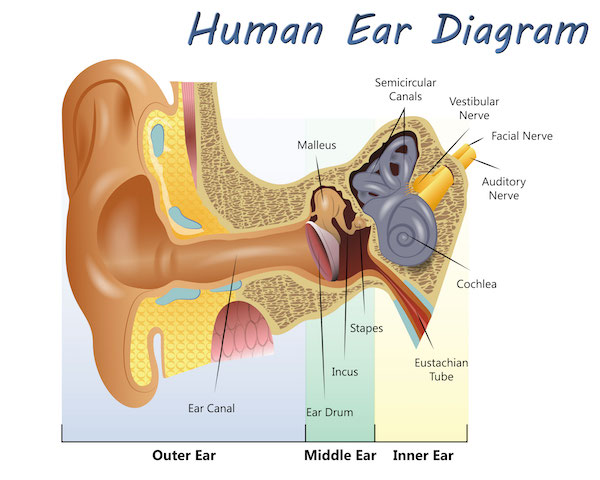Unless you have hearing loss in El Paso, you have probably never pondered exactly how your ears work. They’re something you take for granted, like a hot and dusty west Texas summer. But a knowledge of the hearing process can prove helpful in preventing a hearing impairment down the road.
The Ears are Surprisingly Complex

They might not be much to look at – how many celebrities are renowned for their ears? – but what they lack in appearance, they more than make up for in function. Our ears, it turns out, are complex organs that work in conjunction with the brain. The ears collect and process sound in the external environment, and it is the brain’s job to decipher those sounds into meaningful information.
The external portion of the ear – the outer ear (a/k/a auricle or pinna) – is the part of the ear we are most familiar with. It’s a great place to display jewelry or keep your glasses from slipping off your face, but it also serves an important function: it collects sound waves and funnels them into the ear canal.
Once sounds pass through the ear canal, they enter the middle ear, which is made up of two parts – the auditory canal and the eardrum. When sound waves strike the eardrum, they cause it to vibrate, which in turn stimulates a trio of small bones called the ossicles. These vibrations pass through the oval window, a membrane-covered opening connecting the middle ear to the inner ear.
The inner ear contains the cochlea, a fluid-filled structure resembling a snail’s shell that is divided into three parts. Vibrations from the eardrum cause movement of tiny sensory hair cells called stereocilia; these are responsible for converting the vibrations into electrical impulses that are sent to the brain via the auditory nerve, where they are translated into sounds we learn to recognize.
It’s all a greatly efficient process…when it works right.
What Causes Hearing Loss?
One out of five people in El Paso has hearing loss. For these individuals, the hearing process doesn’t work as it should thanks to damage to one (or more) portions of the ear. The type and degree of impairment, as well as its potential treatment, depends on which part of the ear has been affected.
Damage to the outer or middle ears causes conductive hearing loss. It is often the result of injury, disease or drugs. Conductive hearing loss may be reversible with surgery or medication. Inner ear damage results in sensorineural hearing loss, or nerve deafness, and may be caused by aging, noise exposure, congenital factors or disease. Sensorineural hearing loss cannot be cured and is far more common than conductive hearing loss; about nine out of ten patients with hearing loss in El Paso experiences this type. The good news? Most people with inner ear damage benefit greatly from hearing aids.
According to your El Paso audiologist, in order to reduce your odds of developing hearing loss, take preventative steps whenever possible. Wear earplugs or another form of hearing protection any time you are exposed to noisy activities; when listening to music through earbuds or headphones, set the volume at no more than 60 percent of maximum and take frequent breaks to give your ears a rest; see a doctor if you are suffering from a medical condition that is affecting your hearing or notice a change in hearing ability due to medication use; and schedule routine hearing exams in order to detect problems early.